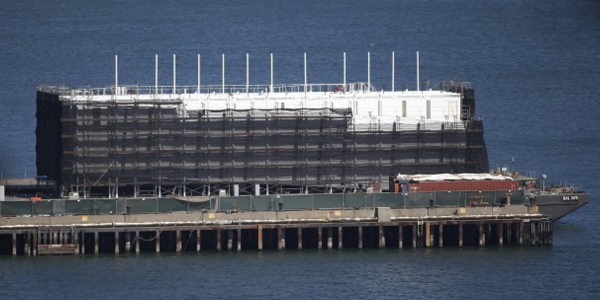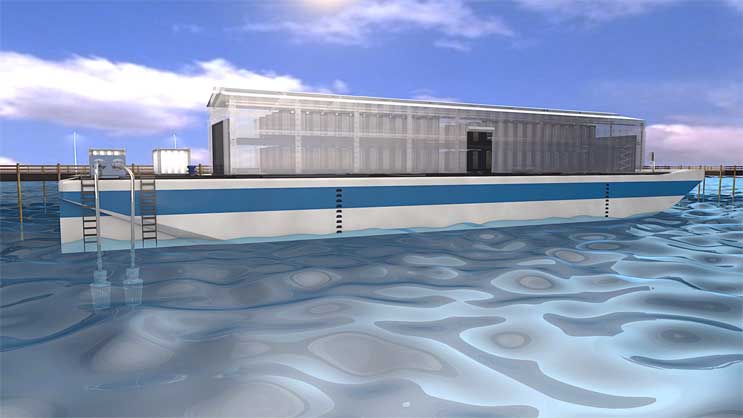The world's first floating data center launched

Startup Nautilus Data Technologies surprised many with its idea of creating floating data centers. Or rather, not even the very idea, but the fact that the company began to implement a project to create two data centers at once, which will be located not on the ground, but on the water. For the first time, the company announced itself at the beginning of the year, and it announced quite loudly, presenting to the public plans for the construction of floating commercial data centers. Data centers were planned to be used to host server hardware, that is, Nautilus Data Technologies acts as a colocation provider.
According to the company's founders, Arnold Magcale and Daniel Kekai, floating data centers have several advantages over conventional DCs. First, it is the ability to quickly move the data center from place to place, if necessary. Secondly - the absence of such factors as natural disasters - earthquakes, wars, etc. Of course, there is the possibility of a storm, but the DCs are fairly well adapted to the excitement of the sea of any force. But such an object always has a refrigerant - this is water that the system takes from under the bottom of the vessel.
The company has been operating in the market not for a year, but for six years. Previously, Nautilus Data Technologies didn’t light up much - the company created a DC project, developed infrastructure elements and software. As it turned out, deploying the entire infrastructure on floating data centers is quite simple and fast. In the case of a successful first experience with two DC barges, another eight floating data centers will be built within six months. The first data center, which was launched, was built at the shipyard of Mar Island.
')

Previously, the test version of the data center, which tested the viability of the idea, made it possible to place five server racks with a design load of 32 kW. At the same time, PUE was a record low - only about 1.045.
After the company received more than $ 25 million investment, the real work began. After several months of preparation, the already full-sized vessel was launched, and now the company is gradually creating all the necessary infrastructure. Physically, the floating DC is located 30 kilometers from San Francisco - there are quite a few companies that have already expressed their desire to rent part of the capacity of the floating data center. The design capacity of the DC is about 8 MW, and the capacity is 800 server racks.

Interestingly, the company operates openly and regularly conducts excursions for its clients, both on the DC under construction and on the working prototype. Among the tenants of the capacity of its data centers, the company calls A10 Networks, Applied Materials and some other companies. Also, some of the facilities can be rented by the US Navy - at a shipyard owned by the military, and an unusual data center is being created. Now the US Navy is just looking for alternatives for standard data centers, and one of the main criteria is the mobility of the object. And this is just what Nautilus Data Technologies can offer - after all, a DC of a company can work without problems in any more or less large port of the world where there is a reliable energy infrastructure, network infrastructure and some other systems.
The company works at a fast pace - the data center on the water will be launched in the first quarter of 2016. The mobile center will be called Eli M, and after readiness it will be towed to the west coast of the USA - the exact location is not reported. The basis for the data center is a restored military barge. The service life of such barges is quite large, and is 50 years. All network equipment and auxiliary peripherals will be located in a special room on the deck. Cooling and power systems will be placed below deck.

Interestingly, the power consumption of floating DC is significantly lower than the power consumption of a conventional data center. The new data center, according to representatives of the project, will consume 50% less energy than DC of similar capacity and size. This is possible thanks to the development of a special software platform, “sharpened” for the operation of DC on water, as well as the original cooling system, using sea water.
Source: https://habr.com/ru/post/271507/
All Articles